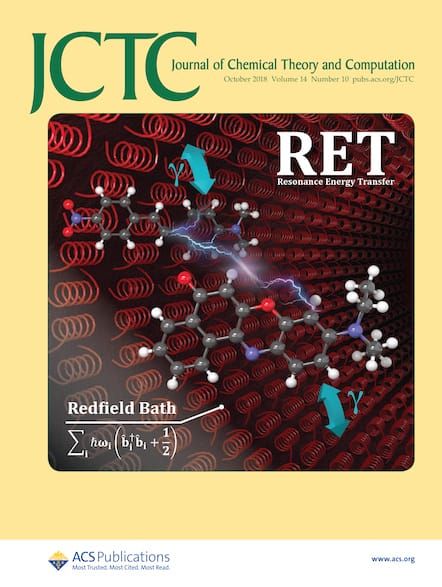Static Subspace Approximation for Random Phase Approximation Correlation Energies: Implementation and Performance
IF 5.5
1区 化学
Q2 CHEMISTRY, PHYSICAL
引用次数: 0
Abstract
Developing theoretical understanding of complex reactions and processes at interfaces requires using methods that go beyond semilocal density functional theory to accurately describe the interactions between solvent, reactants and substrates. Methods based on many-body perturbation theory, such as the random phase approximation (RPA), have previously been limited due to their computational complexity. However, this is now a surmountable barrier due to the advances in computational power available, in particular through modern GPU-based supercomputers. In this work, we describe the implementation of RPA calculations within BerkeleyGW and show its favorable computational performance on large complex systems relevant for catalysis and electrochemistry applications. Our implementation builds off of the static subspace approximation which, by employing a compressed representation of the frequency dependent polarizability, enables the evaluation of the RPA correlation energy with significant acceleration and systematically controllable accuracy. We find that the computational cost of calculating the RPA correlation energy scales only linearly with system size for systems containing up to 50 thousand bands, and is expected to scale quadratically thereafter. We also show excellent strong scaling results across several supercomputers, demonstrating the performance and portability of this implementation.随机相位逼近相关能的静态子空间逼近:实现与性能
要从理论上理解界面上的复杂反应和过程,需要使用超越半局部密度泛函理论的方法来准确描述溶剂、反应物和底物之间的相互作用。基于多体扰动理论的方法,如随机相近似(RPA),以前由于其计算复杂性而受到限制。然而,由于计算能力的进步,特别是基于 GPU 的现代超级计算机的出现,这一障碍现在已经可以克服了。在这项工作中,我们介绍了 RPA 计算在 BerkeleyGW 中的实现,并展示了其在催化和电化学应用相关的大型复杂系统中的良好计算性能。我们的实施建立在静态子空间近似的基础上,通过采用频率相关极化性的压缩表示法,RPA 相关能的评估速度显著加快,精确度可系统控制。我们发现,对于包含多达 5 万个频带的系统,计算 RPA 相关能的计算成本仅与系统规模成线性关系,此后预计将成二次方关系。我们还在多台超级计算机上展示了出色的强扩展结果,证明了这一实现方法的性能和可移植性。
本文章由计算机程序翻译,如有差异,请以英文原文为准。
求助全文
约1分钟内获得全文
求助全文
来源期刊

Journal of Chemical Theory and Computation
化学-物理:原子、分子和化学物理
CiteScore
9.90
自引率
16.40%
发文量
568
审稿时长
1 months
期刊介绍:
The Journal of Chemical Theory and Computation invites new and original contributions with the understanding that, if accepted, they will not be published elsewhere. Papers reporting new theories, methodology, and/or important applications in quantum electronic structure, molecular dynamics, and statistical mechanics are appropriate for submission to this Journal. Specific topics include advances in or applications of ab initio quantum mechanics, density functional theory, design and properties of new materials, surface science, Monte Carlo simulations, solvation models, QM/MM calculations, biomolecular structure prediction, and molecular dynamics in the broadest sense including gas-phase dynamics, ab initio dynamics, biomolecular dynamics, and protein folding. The Journal does not consider papers that are straightforward applications of known methods including DFT and molecular dynamics. The Journal favors submissions that include advances in theory or methodology with applications to compelling problems.
 求助内容:
求助内容: 应助结果提醒方式:
应助结果提醒方式:


